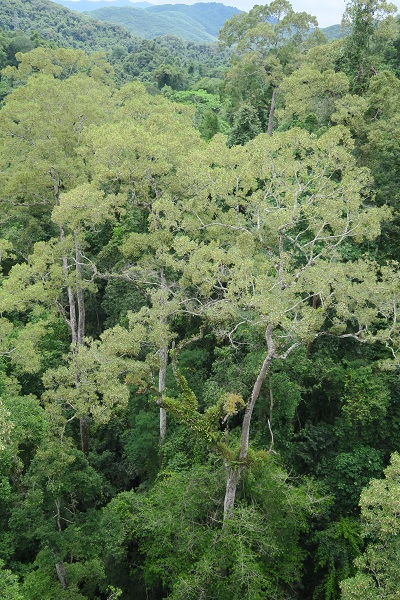Epiphytes are non-parasitic plants that germinate and grow on phorophytes (the host of epiphytes) at all stages of life. Phorophytes, which provide physical support, constitute the basis for the occurrence of epiphytes. Epiphytes and their host phorophytes thus form a typical commensal interaction network. However, the impacts of phorophyte removals on the diversity and stability of epiphyte communities are poorly understood.
In a study published in Forest Ecology & Management, researchers from the Xishuangbanna Tropical Botanical Garden (XTBG) of the Chinese Academy of Sciences attempted to explore the effects of phorophyte removal on robustness of epiphyte community. They investigated the structure of epiphyte-phorophyte networks in the tropical rainforest of Xishuangbanna and conducted a first attempt to predict extinction cascades in epiphyte-phorophyte networks.
The researchers calculated the network structural metrics before removing phorophytes and analyzed phorophyte traits that influenced the distribution of epiphytes. By setting up phorophyte removal scenarios to simulate the secondary extinctions of epiphytes, they then estimated the robustness of epiphytic communities, and assessed the effect of co-extinction on three network metrics.
The species-based and individual-based network exhibited different topology structure. Based on simulation of second extinction, they found that high-intensity disturbance, including the removal of important species from the network and the removal of large proportion of phorophytes, reduced the robustness of the epiphytic community and drastically changed the network structure.
The results suggest that the keystone phorophytes (such as generalists, large individuals and abundant species) should receive special attention in conservation efforts. Selective logging can be acceptable in forest management, but keystone phorophytes should be protected and large-scale logging should be avoided to protect epiphyte diversity.
"Our findings provide direction for predicting the effects of different deforestation activities on epiphytic communities; but further research is needed to revise, improve and validate the accuracy of the model," said SONG Liang of XTBG.







